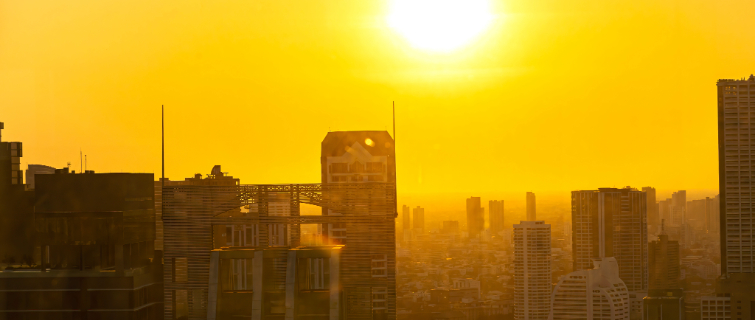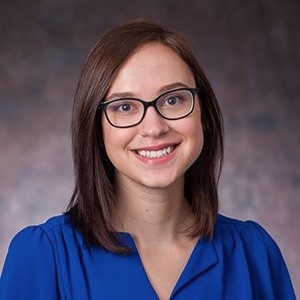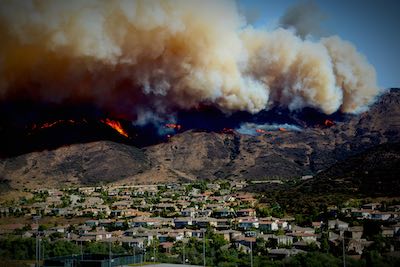
For nearly 30 years, researchers have known that socially isolated individuals—those typically living alone and with few social contacts—are among the most vulnerable to dying in a heat wave. Yet over that time, there has been little research on how emergency workers and other responders are addressing this threat.
Until now.
In her Capstone for the Master’s in Emergency & Disaster Management program at Georgetown University, Carolyn Turkaly, the winner of the program’s 2024 Tropaia Award and now a program analyst at FEMA, examines the literature on this under-researched topic, presents her own findings, and makes recommendations for future studies.
“Nearly three decades after the Chicago disaster revealed the link between heat death and social isolation, still little is known about how emergency managers and public health professionals can prevent these deaths,” Turkaly wrote. “This study sought to understand why there is such a gap between the evidence of a problem and the dearth of solutions.”
Her Capstone begins to close this gap.
“An Unprecedented Disaster”
Just before 3 p.m., the heat index reached 119 degrees, a record for Chicago. Vulnerable residents, many of them elderly, living alone, and confined to unairconditioned, poorly insulated buildings, had no place to go; or, if they did have options—if there were “cooling centers” nearby—hadn’t been told about them or had simply refused to leave their homes.
The date was July 13, 1995, the second day of a heat wave that would continue for another three days. By the time it was over, 739 deaths had been recorded, nearly 10 times the previous record set in 1988. It was an unprecedented disaster and one that has not recurred in this country since. But to call it a singular event would be misleading, because, while no American city has experienced this level of fatalities in a single heat wave, overall, according to the New York Times, rising temperatures have resulted in “a 117 percent increase in heat-related deaths over the past 24 years, with a significant upswing since 2016.”
The 1995 Chicago heat wave is also significant because it prompted the first study that linked heat-related deaths to “social isolation,” a situation in which an individual has few or no social contacts. The 1996 study of the disaster by the Centers for Disease Control found that the risk of death was doubled for people who lived alone and increased nearly sevenfold for those who didn’t leave their homes daily.
In other words, researchers have known since 1996 that social isolation is a big factor—perhaps the biggest factor—in determining who survives a catastrophic heat wave and who does not. Yet, according to Turkaly’s study, there has been little understanding of the extent to which this knowledge informs disaster response throughout the country.
A Vulnerable—and Growing—Population
Hurricanes and wildfires may be more dramatic, but “heat is already the deadliest natural hazard in the United States, killing more people than all other weather events combined,” Turkaly wrote. “Further, climate change is increasing the severity and frequency of extreme heat: Since 1960, the frequency of heat waves affecting the 50 largest U.S cities has tripled.”

At the same time, social isolation is growing. “Less than 30 percent of Americans know most of their neighbors, a sign of shrinking social networks to call on during an emergency. … This intersection of a worsening hazard and a growing vulnerable population demands research and intervention.”
In her research, Turkaly examined the Heat Action Plans—sometimes called Heat Response Plans—for 18 large U.S. cities in the United States. (Another 12 cities did not respond to her query.) She also interviewed emergency managers and public health officials to see how they “perceive and prioritize isolation as a form of vulnerability to extreme heat.”
Seventy-eight percent of the cities’ plans named socially isolated people as a vulnerable population, but most of those interviewed were more likely to mention the elderly and low-income people “and often spoke of the socially isolated as a subset of the senior or disabled population.” Most thought that outreach “co-located with existing services”—mainly social and human services agencies—would be the most effective, and no one thought emergency services should lead this effort.
One emergency manager said that coordinating the efforts of multiple agencies during a heat emergency was challenging: “We were siloed in and of ourselves,” the manager said. “We had a lot of programs that were in place, but everyone was off doing their own thing.”
In her conclusion, Turkaly said that further research is needed on the roles of social and human services providers and that cities should conduct capability assessments—basically, determining how a system works on the ground—“to counteract fragmentation.”
“With intercity learning and further research on wellness-check efficacy,” Turkaly concluded, “the variety of outreach strategies discussed in this paper could be layered, reducing the number of people facing the risks of extreme heat alone.”
Measuring Resilience, “Moving the Needle”
While attending Georgetown, Turkaly was Operations Manager for the World Resources Institute’s Center for Equitable Development.
“She was in my Capstone class and submitted some of the best scholarship I have ever seen from a graduate student,” says Tim Frazier, faculty director of the Master’s in Emergency & Disaster Management program. “I even asked Carolyn if I could use her work as an example for her colleagues to follow. Her Capstone project focusing on building resilience to natural hazards, particularly extreme heat, will no doubt soon be published and will provide a significant contribution to the literature.”
After graduation, Turkaly became a Management and Program Analyst at FEMA’s Office of Resilience Strategy, a position that enables her to carry on the same type of work she performed at Georgetown.
“The main project I work on is to help create a monitoring and evaluation framework for FEMA’s resilience work: How do we measure resilience?" Turkaly says. "How do we know if we’re moving the needle?”
“I got exactly what I wanted out of the program,” she says. “This is the job I went to grad school to get—to get the training to do.”
